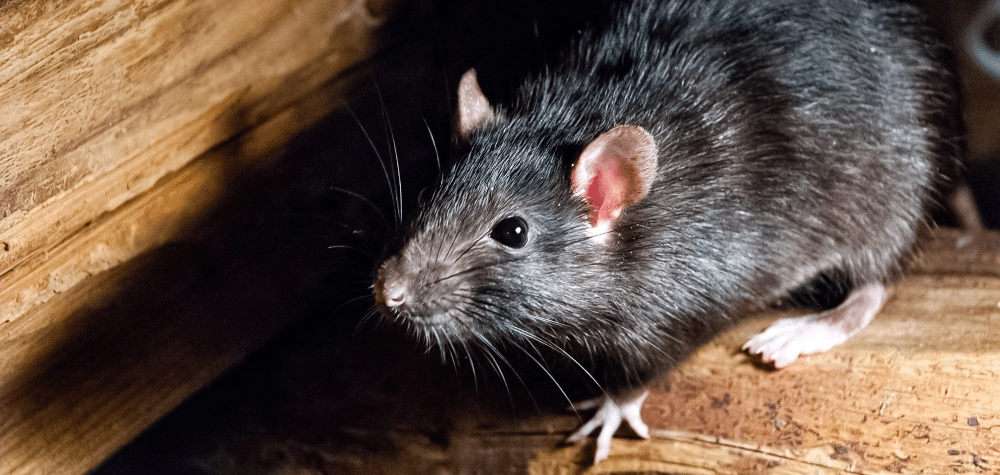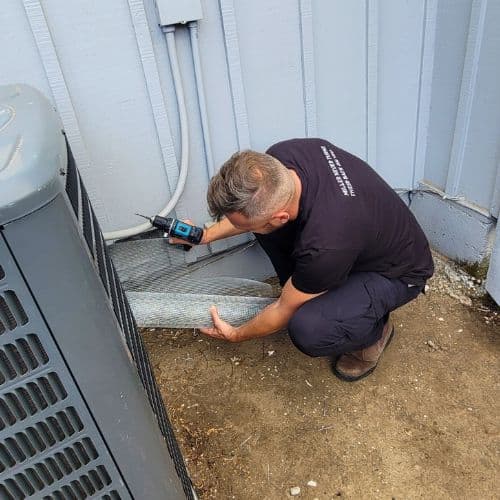You probably think your home is safe. Your neighbors down the street might have a rodent problem, but that’s their issue, right? Wrong. If there are rats in your neighborhood—and there’s a good chance there are—it’s only a matter of time before they find their way into your attic.
This isn’t fearmongering. It’s the reality of how rats operate in urban and suburban environments. Recent data from Northern California neighborhoods reveals a troubling trend: rat populations are exploding, and these pests don’t respect property lines. In fact, a single rat-infested home in Orinda was recently declared a public nuisance after up to 1,000 rats were estimated to be living inside, spilling into the surrounding neighborhood and causing havoc for every home on the block.
If you live in Northern California—particularly in the Bay Area, Sacramento, or surrounding regions—you need to understand how rats travel, why your home is vulnerable, and what you can do to protect your property before it’s too late.
The Shocking Truth About Rat Migration
Here’s what most homeowners don’t realize: rats are highly mobile creatures. While Norway rats typically maintain a home range of 30-50 meters (about 100-165 feet) from their nest, roof rats—the dominant species in Northern California—are exceptional climbers and can travel much farther when searching for food, water, and shelter.
Recent research on urban rat populations reveals that these rodents regularly travel over 600 meters (roughly one-third of a mile) through neighborhoods. They move along utility lines, through sewer systems, across tree branches, and even through shared walls between properties. Large multi-lane roads can act as barriers, but within residential neighborhoods? Rats move freely from house to house.
When a neighboring property becomes infested—whether it’s a vacant home, a house with poor sanitation, or even a nearby restaurant—rats begin to establish “satellite colonies” in surrounding properties. They don’t just stay put. They explore. They expand. And they will find your attic.
Why Attics Are Rat Magnets
Attics are perfect for rats. They’re warm, dry, safe from predators, and rarely disturbed by humans. For roof rats in particular—the species most common in Northern California—attics are prime real estate.
These rodents enter through surprisingly small openings:
- Rats can squeeze through gaps as small as half an inch (about the size of a quarter)
- Mice can fit through openings just 6mm wide (roughly the diameter of a pencil)
Common entry points include:
- Gaps around roof vents and exhaust fans
- Spaces where utility lines enter the home
- Cracks along eaves and soffits
- Damaged or missing roof tiles
- Unsealed gaps around chimneys
- Tree branches touching or overhanging the roof
Once inside, rats establish nests in insulation, chew through electrical wiring (creating serious fire hazards), contaminate spaces with urine and feces, and reproduce at an alarming rate. Two rats can create up to 1,250 offspring in a single year if left unchecked.
The Neighborhood Effect: How Your Neighbor’s Problem Becomes Yours

Let’s walk through a common scenario playing out across Northern California right now:
Stage 1: The Source A home on your block develops a rat problem. Maybe it’s a vacant property with overgrown vegetation. Perhaps it’s a house where food waste isn’t properly managed. Or it could be construction nearby that’s displaced existing rat populations. Whatever the cause, rats establish a colony.
Stage 2: The Spread As the rat population grows, competition for resources intensifies. Rats begin exploring neighboring properties. They travel along fence lines, power lines, and tree branches. They follow underground utility conduits and drainage pipes. Young rats seeking to establish their own territories venture outward.
Stage 3: The Invasion Your home becomes a target. Rats conduct exploratory missions, testing for vulnerabilities. They find that gap around your attic vent. They discover the unsealed opening where your cable line enters the house. They exploit that small crack in your roof’s soffit.
Stage 4: The Infestation Once inside, rats establish nests. Female rats can have up to 5-7 litters per year, with 6-12 pups per litter. Within weeks, what started as one or two exploratory rats becomes a full-blown infestation in your attic.
This pattern is playing out across Northern California neighborhoods right now. Recent reports from the Bay Area document significant rat problems in San Francisco, Oakland, San Jose, and surrounding communities. Lake Tahoe experienced an unprecedented rodent surge in 2025, with one pest control professional reporting pulling “like 70 rats out of this one house.” Even Central Valley almond orchards are battling rat infestations affecting over 100,000 acres.
The California Factor: Why This Region Is Particularly Vulnerable
Northern California’s climate and urban development patterns create ideal conditions for rat populations:
Year-Round Activity: Unlike colder regions where rodents are less active in winter, California’s mild climate means rats remain active throughout the year. There’s no seasonal reprieve.
Urban Density: The Bay Area’s closely-packed housing creates continuous pathways for rat movement between properties. Shared walls, connected utility systems, and proximity to neighboring homes facilitate rapid spread.
Drought Conditions: When natural water sources dry up, rats are driven into residential areas seeking moisture. Your dripping outdoor faucet or pet’s water bowl becomes a major attractant.
Food Sources: California’s outdoor lifestyle means more backyard entertaining, fruit trees, compost bins, and pet feeding areas—all of which attract and sustain rat populations.
Construction and Development: Ongoing construction throughout Northern California displaces established rat colonies, forcing them to seek new territories in surrounding residential neighborhoods.
The Hidden Costs of Delayed Action
Many homeowners adopt a “wait and see” approach, hoping that rats will simply move on. This is a costly mistake.
Health Risks: Rats carry diseases including leptospirosis, hantavirus, and salmonella. Their droppings, urine, and parasites can contaminate your living space.
Fire Hazards: Rats constantly gnaw to keep their teeth from overgrowing. When they chew through electrical wiring in your attic, they create serious fire risks. Rodents are estimated to be responsible for 25% of house fires with unknown causes.
Structural Damage: Rats damage insulation, contaminate it with waste, chew through building materials, and create access points for moisture intrusion.
Property Value Impact: Rat infestations must be disclosed during home sales. The stigma and required remediation can significantly impact property value.
Exponential Growth: The longer you wait, the worse it gets. Remember: two rats can produce 1,250 offspring in one year.
The Solution: Hermetic Sealing
Here’s the truth that pest control companies often don’t emphasize: poisoning and trapping rats is a temporary solution. If your home has entry points, new rats will simply move in after you’ve eliminated the current occupants.
The only truly effective, long-term solution is hermetic sealing—systematically identifying and sealing every potential entry point to create a complete barrier against rodent intrusion.
Professional hermetic sealing involves:
Comprehensive Inspection: Identifying all current and potential entry points, including areas most homeowners miss.
Structural Repairs: Sealing gaps, cracks, and openings using appropriate materials:
- Steel wool or copper mesh for small openings (rats can’t chew through it)
- Hardware cloth (wire mesh) for vents and larger openings
- Metal flashing for gaps around roof penetrations
- Expanding foam combined with wire mesh for irregular spaces
Vent Protection: Installing rodent-proof vent covers on all attic vents, crawl space vents, and exhaust vents.
Tree Management: Trimming branches to prevent roof access (branches should be at least 6 feet away from the roofline).
Ongoing Maintenance: Regular inspections to ensure seals remain intact and address any new vulnerabilities.
The investment in professional hermetic sealing typically pays for itself within the first year through avoided damage, reduced health risks, and lower pest control costs.
What You Should Do Right Now
Don’t wait until you hear scratching in your ceiling at 2 AM. By then, rats have already established themselves in your attic.
Immediate Actions:
- Walk your property’s perimeter: Look for signs of rodent activity—droppings, gnaw marks, burrows, or pathways.
- Inspect your roofline: Check for visible gaps around vents, eaves, and where utilities enter your home.
- Check your attic: Look for droppings, nesting materials, or damaged insulation.
- Talk to neighbors: Discreetly inquire if others have noticed rodent activity. Neighborhood-wide problems require neighborhood-wide solutions.
Long-Term Protection: Schedule a professional hermetic sealing inspection. Companies specializing in rodent exclusion (like Miller Attics in Northern California) can identify vulnerabilities you’ll never spot and implement comprehensive solutions that actually work.
Remember: in Northern California’s climate, with its dense housing and year-round rat activity, your home isn’t protected by luck. It’s protected by preparation. Your neighbors have rats—whether they know it or not. The question isn’t if those rats will try to enter your home. The question is whether they’ll be able to get in when they do.
The best time to rodent-proof your home was before the problem started. The second-best time is right now, before your neighbor’s rat problem becomes your attic infestation.
About Miller Attics: Serving Northern California homeowners, Miller Attics specializes in hermetic home sealing, attic cleaning, gap sealing, and comprehensive rodent prevention solutions. Protect your home before it’s too late. Contact us today for a professional inspection.
📍Serving across the Bay Area
📞 (510) 919-9342

